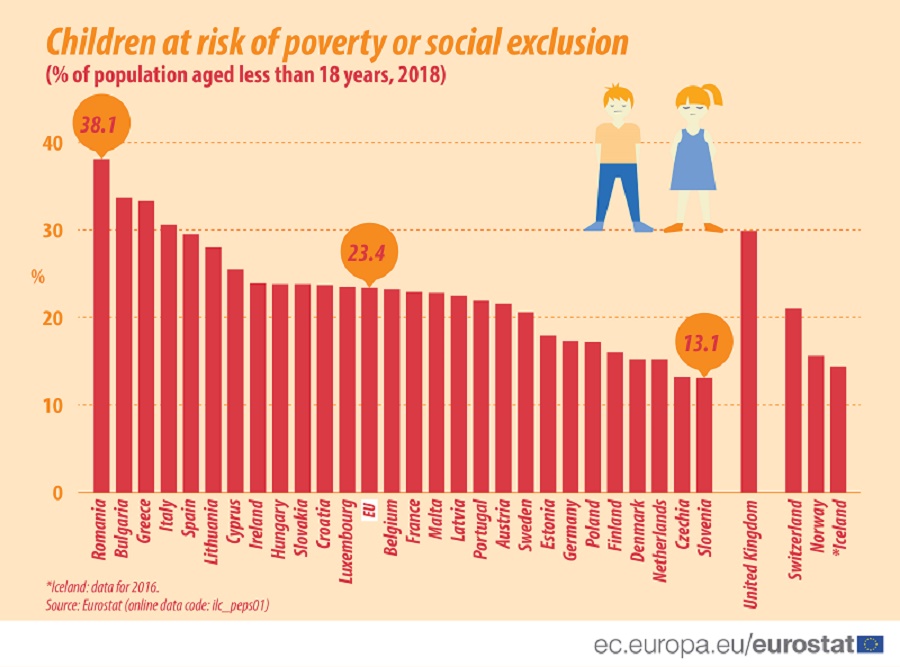
In 2018, 23.4 % of children in the EU27 were at risk of poverty or social exclusion compared with 22.1 % of adults (18–64) and 18.4 % of the elderly (65 or over).
Being at risk of poverty or social exclusion means to be in at least one of the following three conditions: at risk of poverty after social transfers (income poverty), severely materially deprived or living in households with very low work intensity.
Children were the age group with the highest at risk of poverty or social exclusion rates in nearly half of the EU Member States, with rates ranging from 13.1% in Slovenia and 13.2% in Czechia to 38.1% in Romania and 33.7% in Bulgaria.
Source dataset: ilc_peps01
The largest differences between the at risk of poverty or social exclusion rates of children and the total population were found in France, Romania and Slovakia at more than 5.0 percentage points (pp) higher for children than for the total population. At the other end, the rates for children were below those of the total population, with more than 5 pp in Latvia (– 5.9 pp) and Estonia (– 6.5 pp).
Further information is provided in the Statistics Explained article Children at risk of poverty and social exclusion.
Note:
The European Union (EU) includes 27 EU Member States. The United Kingdom left the European Union on 31 January 2020. Further information is published here.
To contact us, please visit our User Support page.
For press queries, please contact our Media Support.


